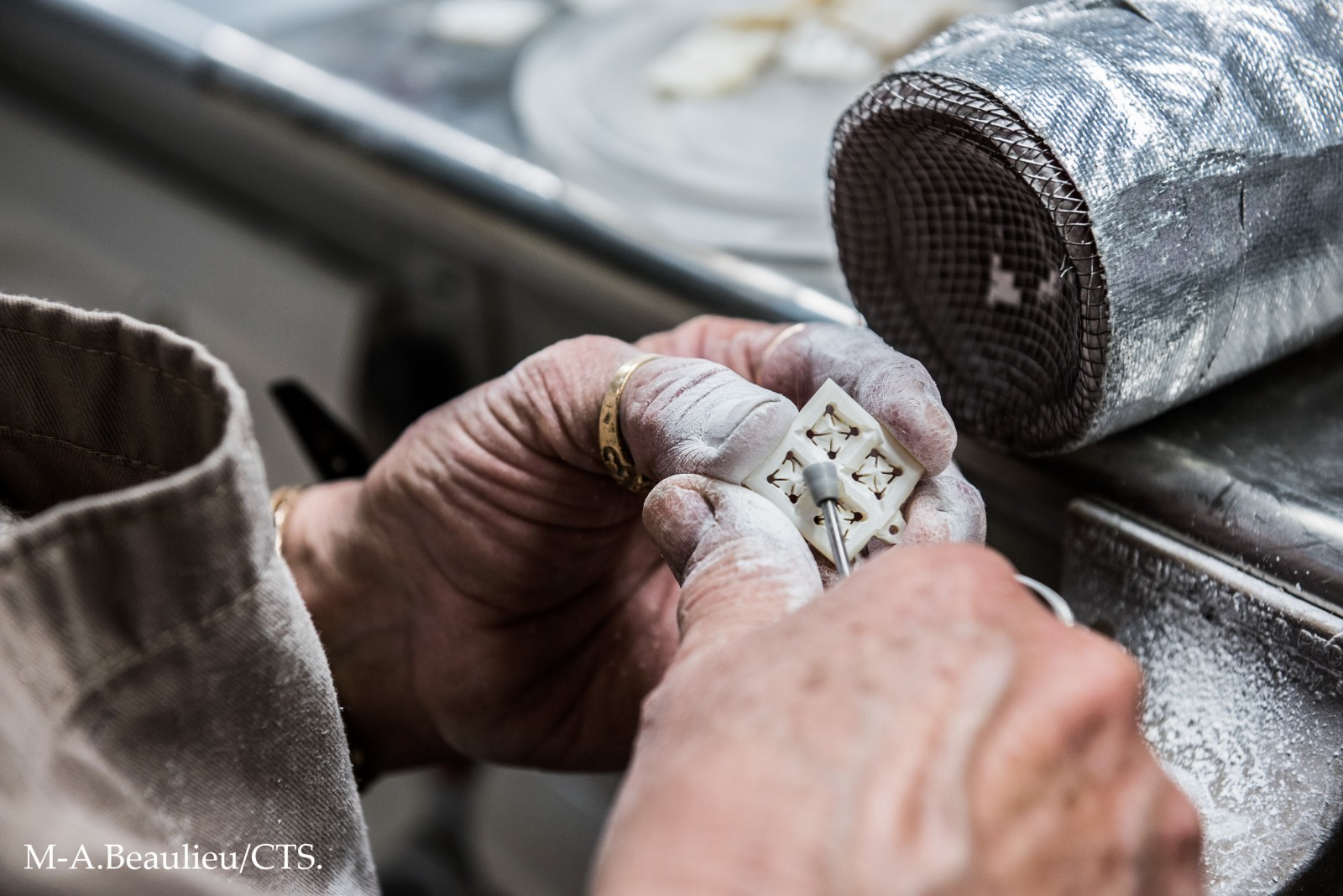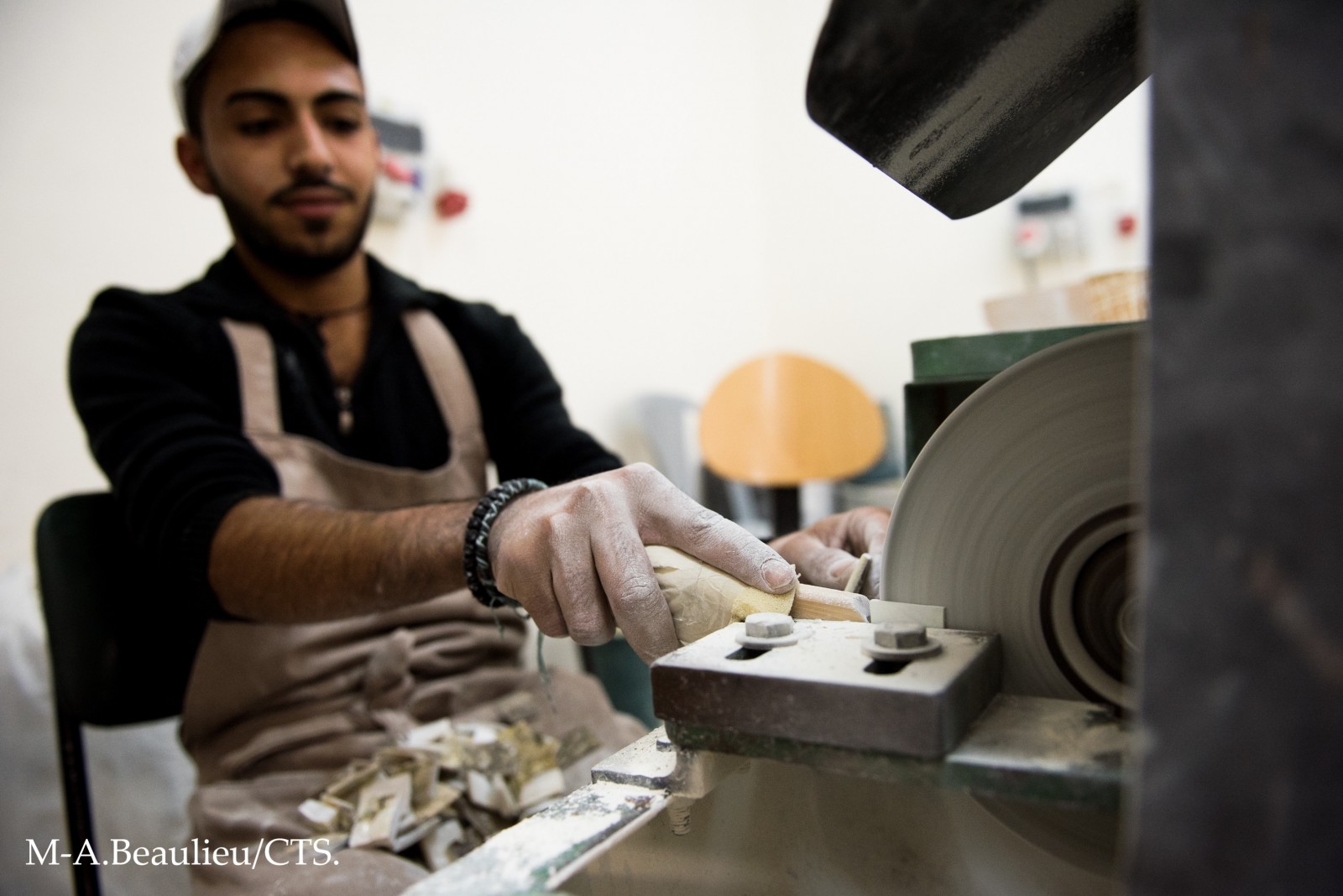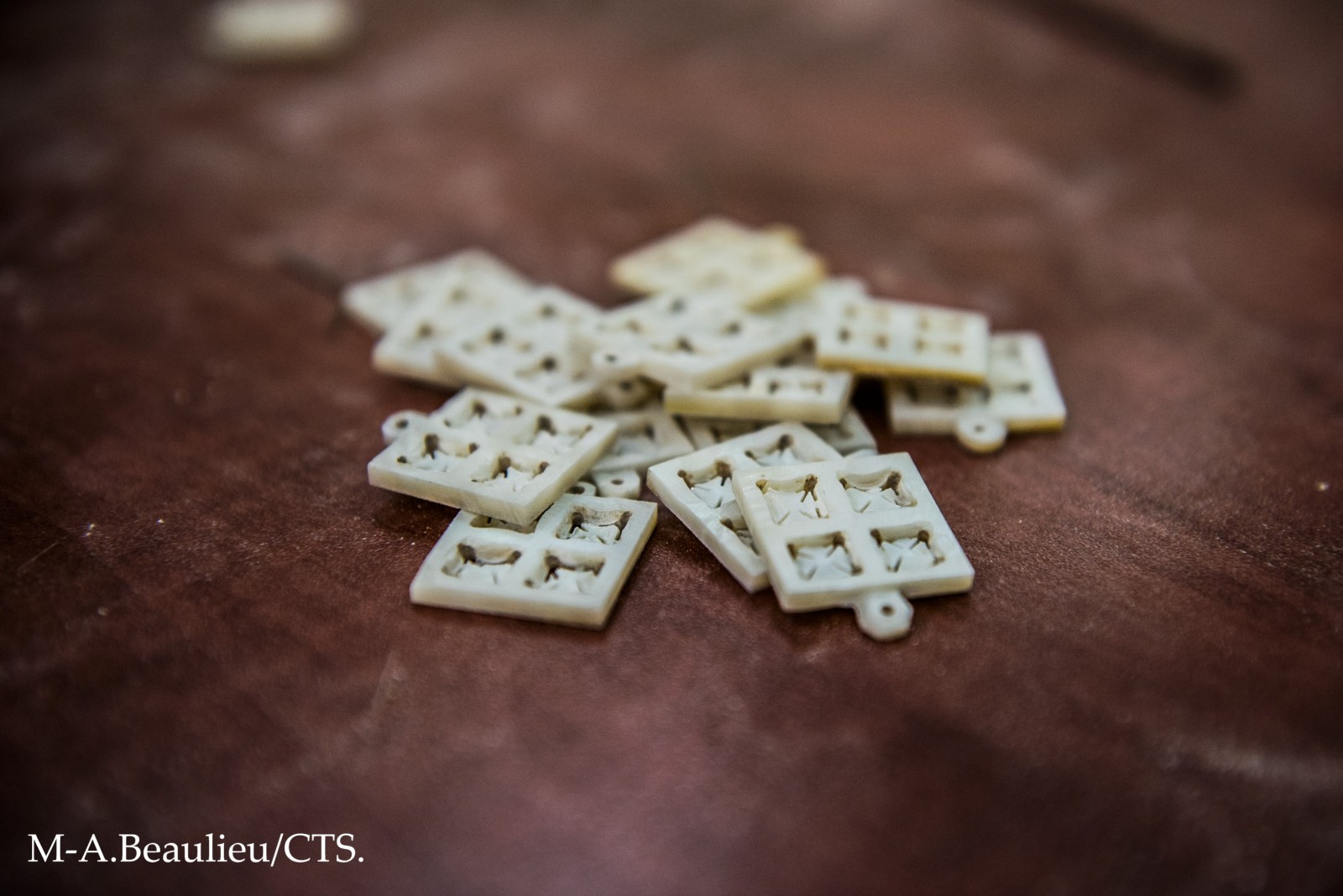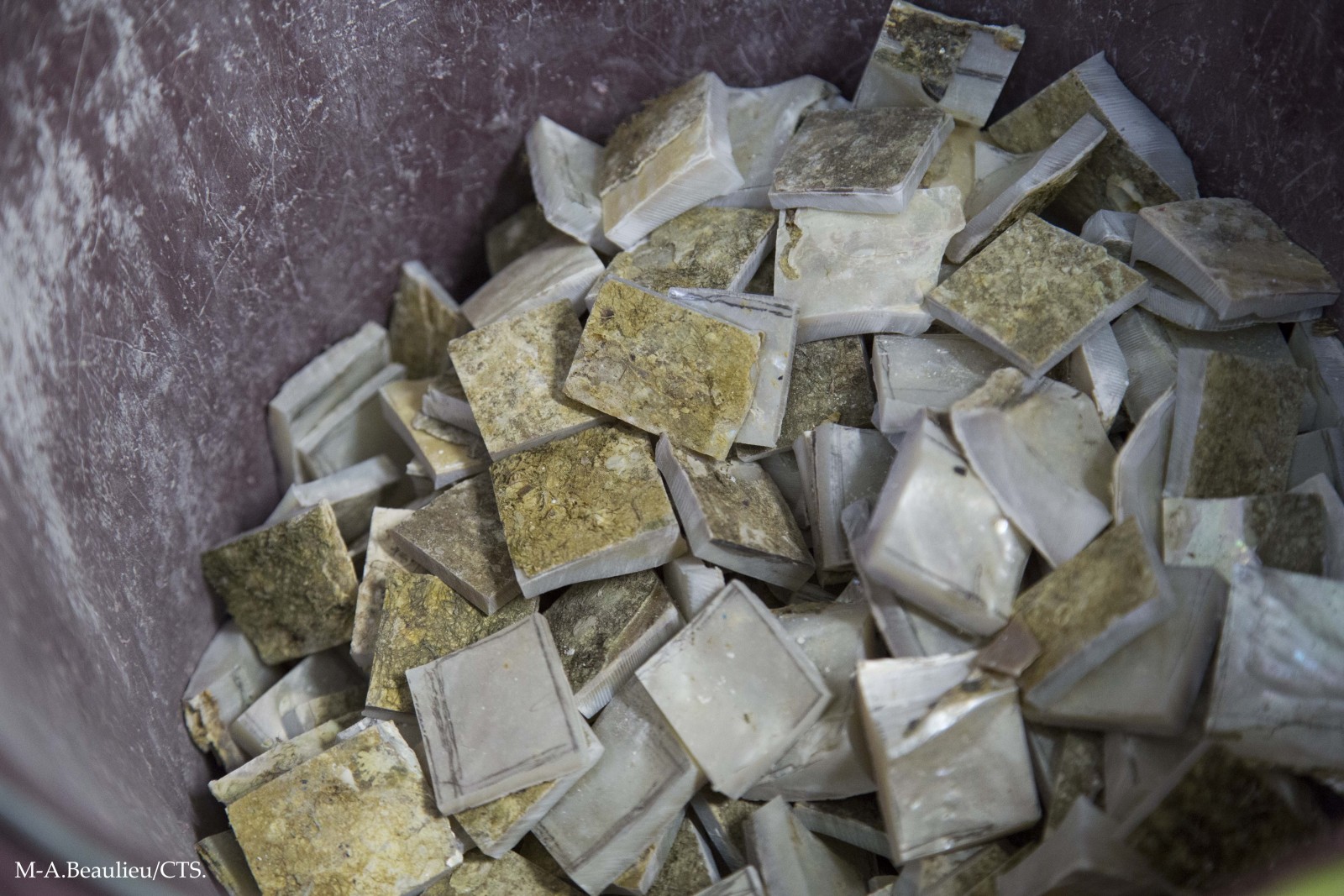At the school of mother-of-pearl artisans in Bethlehem
Instituted by the Franciscans during the 16th century, mother-of-pearl craftsmanship has been revived in Bethlehem. Concerned about preserving and valuing this Christian and Palestinian cultural heritage, the Terra Sancta Museum will pay tribute to the workshop through a room in the future museum. Meet the last mother-of-pearl master artisans of Bethlehem.
The Michele Piccirillo Center was created by the great Franciscan archaeologist who gave the center its name. It was during the writing of a book titled The New Jerusalem: Palestinian Craftsmanship in the Service of the Holy Places that the latter made inquiries at museums and private collections to identify the most beautiful mother-of-pearl pieces from Bethlehem. But just as he was about to show what the most beautiful Christian-Palestinian craftsmanship had produced for centuries, it would disappear?
It was a misunderstanding of Brother Michele who had as much love for the past as he did for the present. As of 2003, with the help of some benefactors, he brought an Italian master mother-of-pearl artisan, Salvatore Giannottu, to Bethlehem. In a side building of the Franciscan monastery, he had a laboratory installed with two benches equipped with vacuums and micromotors. But his premature death in 2008 put a halt to the business until Brother Ibrahim Faltas, also a Franciscan, took over. “Mother-of-pearl in Bethlehem is a Franciscan tradition. It was introduced by the Franciscans in the 16th century. It was the Franciscans who promoted it during the 19th century,” summarizes Brother Ibrahim. It was Brother Bernardino Amico, architect and draughtsman, present in Bethlehem between 1593 and 1597, who introduced mother-of-pearl craftsmanship.


He then submitted models of the Church of the Nativity and the Church of the Holy Sepulchre to the craftsmen so that they could be made in wood (pistachio and olive tree) and mother-of-pearl. These are the masterpieces that are highly sought after by museums today. Or rather, were sought after. Nowadays, most known pieces are either in the biggest museums or in the possession of proud collectors.
At the Michele Piccirillo Center, we meet Salim Atick, 52 years old, who learned his father’s trade. The mother-of-pearl trade has been passed down in the Atick family for five generations. Salim has a goal: to train the mother-of-pearl artisans who will succeed him in this ancestral art which the Bethlehemite themselves mastered. Salim himself almost threw in the towel. During the Second Intifada, when one night the door of his workshop was broken into by the Israeli army during an incursion, he had some of his equipment stolen. At the same time, mother-of-pearl workshops were closing one after the other due to the failure of pilgrims to buy their products. Despite the losses he suffered and because he loved his job so much, Salim kept himself afloat.
It was Brother Ibrahim and Samer Baboun who went to Salim’s workshop last year to offer him the opportunity to teach in the Michele Piccirillo Center. Samer, who has a degree in Public Administration, was keen to discover the mother-of-pearl tradition. He is not a manager in the traditional sense, preferring the word “facilitator.” Officially, he is the director of the center, but a director who welcomes everyone as they are and at the time they want to come. “We want to make young people eager to come. They know that the courses are spread over three days of the week and that on all the other days, the workshop is open from 8 am to 8 pm.”


The workshop runs thanks to commissions from the Custody of the Holy Land and the Latin Patriarchate for small mother-of-pearl crosses to offer to visitors, each commission ordering 10,000 crosses. Each cross needs 20 steps to produce which requires 35 minutes of work in total. “Economic motivation is legitimate but must come last. One can make a decent living as a mother-of-pearl artisan. With regard to the commissions, it was an extremely encouraging sign for the students. As a school rather than a production workshop, since our teaching is non-profit, we have decided to give the money to the apprentices in proportion to the number of pieces they produce for a given commission.”
It is also to this workshop that the Scientific Committee of the Terra Sancta Museum has entrusted the restoration of the mother-of-pearl works that will be displayed in the rooms of the Historical Section. Geroge Al’Ama, a collector keen on the history of Palestinian craftsmanship and a consultant for the Scientific Committee, has followed the restoration process. “Geroge is a spiritual father in Bethlehem for everything related to our cultural heritage,” shares Samer, with whom Geroge frequently collaborates. “As soon as Geroge acquires a new mother-of-pearl piece, he entrusts us with its restoration. Of course, Salim is in charge of it, because Salim knows all the techniques, and he is a true artist. But it is also an opportunity for him to pass on his knowledge to his most promising students,” adds Salim.
To the side, on a table in a neighboring room, a cross is waiting to be restored to its former glory. Salim looks upon it fondly. “The technique used here is called tahbiir, literally ‘inking.’ After the design has been engraved into the mother-of-pearl with a stylus, Chinese ink is injected into it. The other most important technique is tasfiir, literally ‘smoothing.’ It’s essentially marquetry.” Hanging on the wall, a mother-of-pearl painting depicts the site of the manger in front of the Church of the Nativity. There is mother-of-pearl in black, white, yellow, and blue. The texture can be moire, satiny, or matte. It all depends on its origin and the way it is handled.
Father Ibrahim Faltas looks at a photograph of the first class. Today, many of the students have jobs. One of them has his own workshop. He is clearly satisfied, and he has reason to be. However, the game is not yet won. Today, the school lives under the patronage of its donors. “The classes are free for the students and must remain that way,” explains Samer, who agrees that it will be necessary to consider changing the economic model of the center to ensure its sustainability as donors move from one project to another. However, pilgrims must also be willing to buy quality mother-of-pearl products rather than cheap Chinese knockoffs. Samer remains confident: “The Chinese can compete with us, but they can’t imitate us. The quality of our work sets us apart. But yes, as in the past, pilgrims will play an essential role.”
Article taken from Terra Sancta Magazine no. 652, November-December 2017: “At the Sadafjiyé school, the mother-of-pearl artisans of Bethlehem.”



